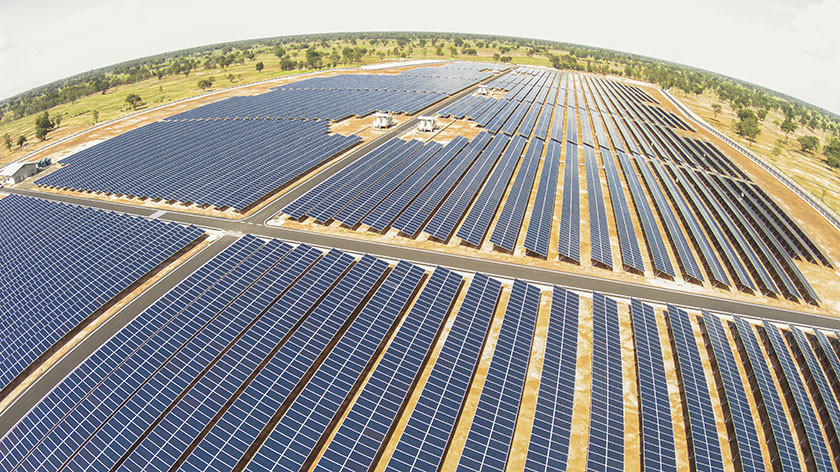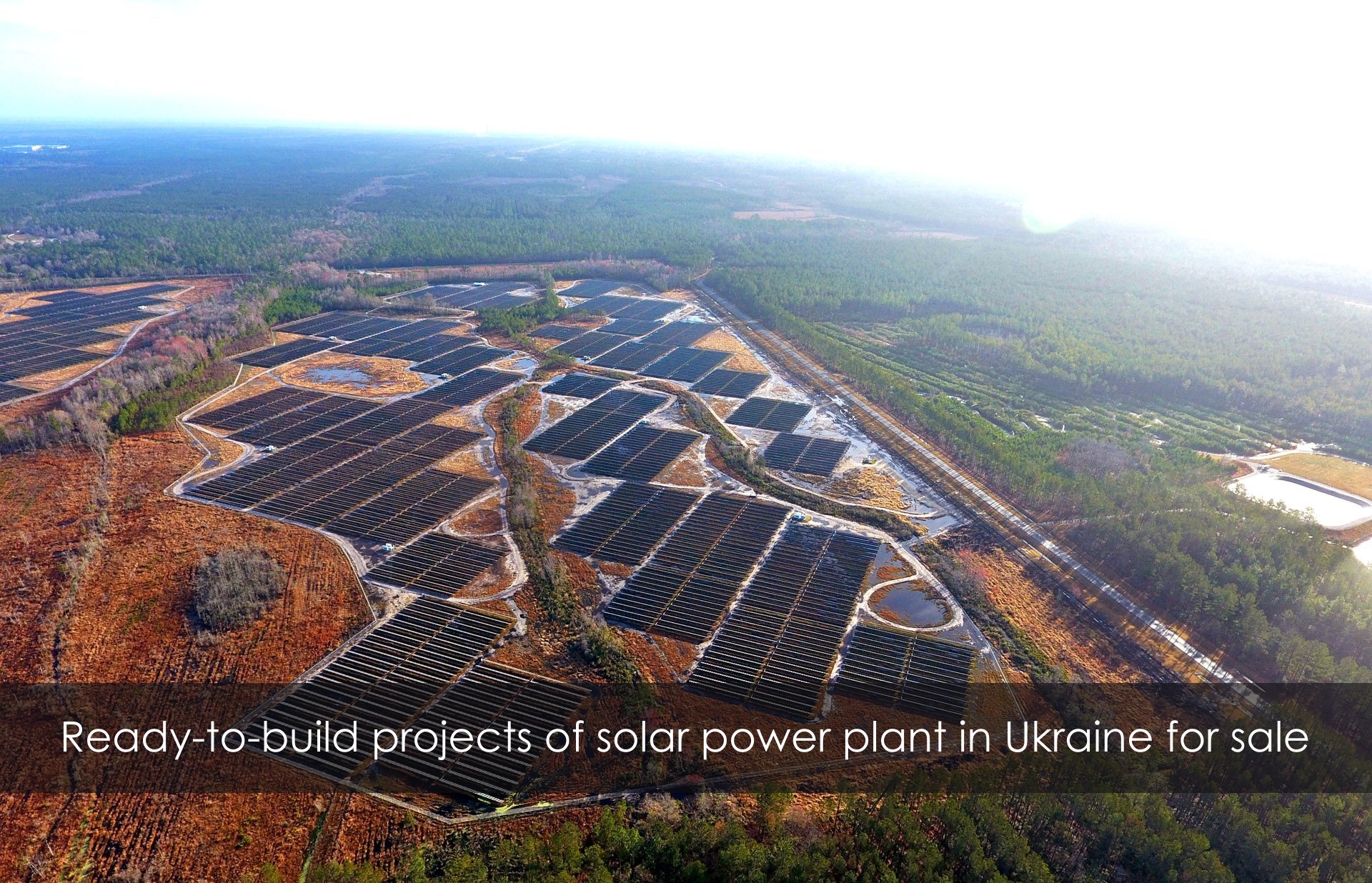All around the globe, renewable energy subsidies are giving way to renewable auctions and last month Ukraine joined the club.
Scores of countries incentivized green energy with subsidies. One of the most popular kinds of subsidy was a feed-in tariff paid to energy producers. Ukraine’s 2009 feed- in tariff was the most generous in Europe. Now, a new law is set to phase it out for larger developers.
“It is in the interest of Ukraine to receive the lowest possible price” for renewable energy, said Olga Bielkova, the deputy head of the Rada’s committee on Fuel and Energy Complex. “Only countries that switched to auctions were able to achieve this.”
Energy experts agree that feed-in tariffs helped expand the global renewables industry and massively drive down capital costs. According to global asset management firm Lazard, photovoltaic costs dropped 88 percent and wind costs dropped 69 percent since 2009.
Yet in the long run, high tariffs can also drive up energy costs for nations and consumers. Subsidy dependence and policy uncertainty made for a series of boom-bust cycles across some green energy markets. In Ukraine, the high tariff led to the rise of so-called green oligarchs.
The past decade saw a global trend to let the market take over. According to the International Renewable Energy Agency (IRENA), the number of countries that adopted renewable auctions rose to 67 in 2017 from 6 in 2005 and that number is growing. Major countries that introduced renewable auctions include India, Germany and Brazil. Dozens of states across Europe, Asia, Africa and the Americas introduced auctions either to replace or accompany existing subsidies.
"Now that the price came down and the technology matured, auctions are a better way to award contracts," said Heymi Bahar, International Energy Agency (IEA)’s senior analyst.
In Ukraine, the push for auctions came from international financial institutions. For example, last year, the European Bank for Reconstruction and Development said that it would stop financing solar projects in Ukraine until auctions were introduced.
“It became apparent (in the view of international financial organizations and players in the market). that with intense stimulation of green energy in Ukraine, there is a risk that certain parties will not be able to meet their obligations in paying out the green tariff,” said Oleksandra Gumeniuk, the director of the European Ukrainian Energy Agency, a business association.
In most countries, auctions made renewable electricity prices dramatically cheaper for utilities and consumers. Yet, because renewable projects are now much cheaper to build, developers can still make a profit.
Still, some auctions work better than others. And in some countries, the switch accompanied either a drop in renewable investments or a scramble to get projects completed before the subsidies, ran out. Bahar told the Kyiv Post this is common during such transitions but auction schemes are still better in the long run.
Most analysts who spoke to the Kyiv Post agree, saying that feed-in tariffs have already served their function in Ukraine and the time has come to replace them with auctions.
However, when designing auctions, the devil is in the details.
Transition uncertainty
In May, the IEA reported that renewable energy development stalled worldwide in 2018. The biggest factor was China, a leader in renewable development, starting to change its feed-in tariffs after its green energy fund ran into big deficits. In May, China announced that it will build 20.8 gigawatts of renewable energy projects without subsidies.
In the European Union, the IEA saw a big decline in wind power due to the U.K. cutting incentives for onshore wind and Germany's transition from feed-in tariffs to auctions. "We saw a significant peak last year and a big decline this year because developers wanted to put their capacity online before the transition happened," according to Bahar.
Hanns Koenig, an analyst with the research firm Aurora, agreed that this kind of “rush” is common in countries that are transitioning from subsidies to auctions.
Multiple lawmakers and industry experts told the Kyiv Post that they, too, saw a last-minute scramble to get the last of the feed-in tariff locked in until 2030. The first quarter of 2019 saw more renewable_ projects come online than all of 2018, according to the State Agency on Energy Efficiency.
Right now, in Ukraine, more foreign companies than ever before have expressed interest and started applying for renewable projects. Bielkova said that introducing auctions in the gas industry attracted serious investments.
“In Ukraine, renewables are in the headlines, it’s an industry where you have investment,” said Oleksiy Feliv, a partner at law firm Intégrités. “Real, international, big professionally structured investment. We don’t have any other industry that would attract this kind of investment.”
However, it is hard to know for sure how much international participation Ukraine can expect. Magnus Johansen, a business development manager at Norwegian company Scatec Solar, wrote in February the company is looking to see if Ukraine's auction scheme is well-implemented, like in South Africa, Brazil and Argentina. If it is, the company could invest into additional projects.
"Should however the scheme not be well implemented as we have witnessed in several markets — where the auction scheme led to market collapse and where projects have not been realized due to ineffective mechanisms (Turkey, Kazakhstan, Mexico etc.) then we would likely not be able to construct further projects after 2019,” he wot in an expert analysis.
Ensuring delivery
The financing requirement was the most hotly disputed aspect of the legislation. If the requirement is too high, it could lead to reduced competition. If it is too low, it could lead to project non-completion and manipulation of the auction by traders who would try to sell a winning bid to other developers.
Ukraine's law requires a bank guarantee of 5,000 euros per megawatt of electricity being bid on, as well as existing land and construction rights. Winners must provides bank guarantee of 15,000 euros.
This is a lot lower than in other countries that held successful auctions. Argentina asks for a minimum of $500,000 in net worth per megawatt requirement and fa each bidder to provide a bid bond of $50,000 plus $250,000 shareholder equity. Germany asks for bid bonds of 25 to 50 euros per kilowatt hour (100 per kilowatt hour of offshore wind). The IRENA guideline is a bid bond of 35,000 euros per megawatt.
Feliv said that Ukraine’s requirements are sufficient to prevent market manipulation by traders. Johansen would disagree, suggesting that Ukraine needed to increase its bid bond requirement to screen out traders, who are one of the main reasons why auction schemes in countries including Mexico, Turkey and Kazakhstan were less successful.
Access to financing is another question that hangs over developers worldwide. According to a 2018 report by the United Nations Environment Programme and Bloomberg, renewable energy projects in many countries are losing two pillars at once. One is government subsidy and the other is ease of financing, due to rising interest rates.
"A new era may be beckoning in which solar and wind costs are lower but financing is more difficult to get and more expensive,” the report said.
Tetiana Kovalenko, spokeswoman for Ukrainian developer Indian Solar said: "As for onshore industrial projects, investors are frozen in anticipation of fundamental changes and are not in a hurry to resume their activity." She added that investors will be encouraged in part if many Ukrainian banks implement financing programs.
Auction structures
Ukraine’s auctions are single-stage sealed bid: developers submit sealed proposals with a description and a power price. The bids are reviewed simultaneously and the lowest price wins.
Koenig says this approach is very common. According to IRENA, it is one of the most commonly used strategies in the world and its virtue is simplicity. China, India, Dubai, Morocco, Peru and South Africa use the sealed bid process.
Lawmaker Oleksiy Ryabchyn, head of the Rada's subcommittee on energy efficiency, is worried that the auction law will halt investment into Ukraine’s renewables. One of his concerns is possible collusion between businesses during the bidding process.
"Whatever the auction system, it requires thorough elaboration in terms of the applicable procedures, trading algorithms and technicalities that should be designed in such a way to prevent and minimise abuses," Svitlana Teush, head of renewable energy at Redcliffe Partners, told the Kyiv Post in an emailed response.
But Feliv, who consulted on the law’s creation, countered that there is sufficient transparency and anti-collusion protection in the auction's design. He expressed confidence that it would be hard for companies to subvert or manipulate the process.
Balancing and grid
One of the biggest challenges for Ukraine is to work out its balancing capacity, experts say.
With a high amount of renewable energy like wind and solar comes a lot of fluctuation. Solar power surges during the day and ebbs away at night. Wind power is also inconsistent. Conventional energy sources are required to balance them out and deliver consistent power.
“When the sun sets, you need other plants to increase their production to balance the solar excess that’s leaving the system,” said Koenig. “You need flexible gas or coal plants that could increase production rapidly as solar decreases. If the conventional technology is quite old, it would be challenging.”
Experts said that while Ukraine’s large hydropower can take some of the edge off these fluctuations, there is not enough of it. Balancing might require the construction of new coal power plants, which defeats the entire purpose of renewables in the first place.
“We now have this paradox because the balancing role will be played, in part, by hydro energy but mainly thermal, meaning coal,” said Bielkova.
Renewable energy producers who participate in the auction and the feed-in tariff will be responsible for balancing costs as a group. The responsibility will be phased in gradually until 2024. Experts say that it’s unclear what financing for balancing costs will look like.
The grid also needs significant extensions, repairs and upgrades, as is the case in many places with auction regimes. For example, according to a 2018 report by the University of Cape Town, Argentina needs thousands of kilometers of transmission lines to accommodate its growing renewable sector, which represents a significant risk for the offtaker.
Even Germany, one of the most mature renewables markets in the world, is not an exception. Grid development lagged behind wind power development, according to media reports.
Multiple experts agreed that Ukraine’s aging electrical infrastructure is a source of uncertainty. To make effective use of renewable energy, a great deal of power lines, energy storage facilities and other infrastructural projects will need to be rebuilt or upgraded. Experts said that it’s not clear who is going to finance this or how.




